You’re feeling it aren’t you?
A little bit overwhelmed, a little bit excited, a little bit I’ve-got-so-many-ideas-and-I-don’t-know-where-to-start.
B2B content marketing is a huge beast to tackle.

Blogs, white papers, case studies, ebooks, guest posts, webinars, podcasts, templates, infographics, videos. The list of content marketing tools at your disposal is long, maybe longer than your Trello To-Do list.
And the stakes are high. That’s why nearly 92% of marketers value their content as an important business asset.
Get it wrong and you risk a top-of-funnel blockage, a stream of sales leads that turns into a trickle, and an uncomfortable discussion with Mr Sterling.
Get it right, and you’ll be the receiver of great praise, and perhaps a raise. Or at least raised overhead, carried around the office on the shoulders of your colleagues as they celebrate the success you created, O Mighty Marketing Mastermind.
Okay, head down from the clouds. If you want to live out the dream and crush your marketing goals, you need to understand business to business content marketing and how to create a successful B2B content marketing strategy.
Content Marketing For B2B In a Nutshell
A fairly self explanatory concept, B2B content marketing is the practice of using a variety of content types to grow your audience, create engagement, and ultimately drive sales leads. This often encompasses a number of different content types, platforms, and deliveries, targeted at different stages in the buy cycle (top, middle, and bottom of funnel).
A key difference in B2B content marketing is the intended audience. Content marketing for B2B companies focuses on converting business owners and executives into leads or customers, and therefore needs to cater to those buyer motivations.
The Difference Between B2C and B2B Content Marketing
To be successful your content must be:
- Useful - B2C marketing can get away with fluff pieces that grow brand awareness, B2B marketers are dealing with buyers that are making logical decisions, not only emotional ones.
- Efficient - time is a concern for all business owners, execs and decision makers. You need to communicate your message quickly and clearly.
- Actionable - the user should be able to take something away that they can put into action immediately.
| B2C Content Marketing | B2B Content Marketing |
|---|---|
| Emotionally driven buyers | Logic driven buyers |
| Short buy cycle | Long buy cycle |
| Goal = brand awareness | Goal = lead generation |
| Can be simply for entertainment | Must be useful and actionable |
Why B2B Marketing Content is So Crucial
1. The Best Marketing Leaders Are Content Marketing Experts
We’re not suggesting that trying to keep up with the Jones’ is the best marketing strategy, but you have to admit, they’re setting a pretty good standard.
Not only do more than 50% of businesses invest in content marketing as part of their B2B marketing strategy, but the best of the best are seeing close to 20% year-on-year growth in unique website traffic. Compare that to the 2.5% growth reported by followers and it's clear that business to business content marketing is a powerful investment.
2. It Gives The People What They Want
When you’re considering purchasing a new piece of email automation software, or weighing up potential CRMs, where do you head to start gathering information? You might reach out to your network, maybe talk to some friends and colleagues, but most likely the initial part of your search will be on Google.
And guess what you’ll be using to educate yourself? Content. In fact, you’ll probably review 3-5 pieces of content before engaging with the supplier.
Your buyers are exactly the same, and thanks to the miracle that is SEO, a couple of those pieces will likely be blogs. According to a study conducted by Emily Byford the top 10% of SaaS blogs get over 100k views each month as a result of organic search.
3. Content Marketing For B2B Companies Is Seriously Cost Effective
We all love a good ROI, and B2B Content Marketing is one of the most cost effective forms of marketing at your disposal. Compared to traditional marketing techniques, content marketing generates 3x more leads and costs 62% less.
You can pump that figure up even further by repurposing your content assets across multiple formats, distribution channels, and audiences. This is a common technique used by B2B content marketers, with nearly 60% reusing content 2-5 times.
4. B2B Content Marketing Gets Results - And You Can Prove It
One of the biggest challenges business owners and marketing leaders face is understanding the ROI from their marketing activities. Traditional marketing activities such as radio advertising and mail-outs have always been difficult to quantify, but content marketing often involves the use of a variety of tools to manage, track, and report on your successes.
In fact, content marketing conversion rates are 6x higher than other marketing techniques, and with the right systems in place, it's easily measurable.
5. Grow Your Company, Predictably
Metrics aren’t just about showing the board how well the business is performing. They’re also vital to making informed decisions about future moves and investments.
So if you’re looking to predictably grow your B2B SaaS company, then content marketing is going to be a big part of your marketing plan.
But that doesn’t mean pumping out content willy-nilly. If you really want predictable growth, you need to start with a content marketing strategy.
B2B Content Marketing Strategies
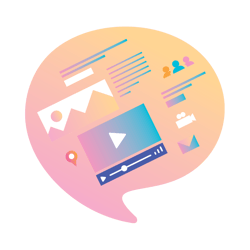 A content marketing strategy is the ‘why’ behind all of your content marketing activities. Before you get into any content planning, you need to start with a well-defined purpose. Otherwise, you’ll be creating content that isn’t driven by a core strategy and motive, and the content you create will be ineffective.
A content marketing strategy is the ‘why’ behind all of your content marketing activities. Before you get into any content planning, you need to start with a well-defined purpose. Otherwise, you’ll be creating content that isn’t driven by a core strategy and motive, and the content you create will be ineffective.
Typically, this is driven by a defined business goal such as: audience growth, increased revenue, and more sales leads.
From here, marketers will typically use the content marketing strategy to dive further into a content strategy, defined by Kristina Halvorson as the “creation, publication, and governance of useful, usable content.”
Creating A B2B Content Strategy
We all want to jump straight into the exciting part, brainstorming ideas for blogs, interactive webinars, and launching a podcast. But, before you get into the fun stuff, you have to get your strategy straight.
It Doesn’t Start With Me. It Starts With Them
Your audience.

As is the case in practically any marketing activity, a B2B content strategy begins with who you are creating content for, and what they really care about.
Fail to consider this, and any content you create will be misguided and likely ineffective.
If it isn't an exercise you’ve completed already, the first step in creating a successful content strategy is to build out your customer/buyer personas. You can tick this off the old to-do list in 3 simple steps.
- Analyze trends in the data you’ve collected
- Head down to the sales floor and interview your salespeople
- Interview your customers, and your non-customers/prospects
Analyze trends in the data you’ve collected
Spend some time poring through your customer data and contact database and look for any trends in behaviour. How are your customers finding and consuming your content? Who is typically involved in the buying process (KDM, influencers, etc)?
If you’re a SaaS company, you might review the information and how your customers are actually using your product, which features are most popular, and which types of employees are using which features.
If you’re developing an industrial content marketing strategy, you might pull any historical data from web analytics, sales software, CRM, or whatever you have available.
Head down to the sales floor and interview your salespeople
And we don’t mean reviewing sales documentation, scripts, and training videos. Go and talk to people who are on the phone or out on the road all day.
They’re the people who understand your customers’ needs the most, what they care about, what they are interested in, why your company is an option for them, and why they buy!
Interview your customers, and your non-customers/prospects

Who knows your audience better than your audience?
You may need to consider offering some form of incentive here, depending on your client base, but it’s a worthwhile investment.
Find out what they love about your product, and what they don’t like. Find out what problem it solves for them (you may be surprised to find it varies a little from the intended purpose). Find out why they chose your company over the competition. Find out who they are, their job roles and responsibilities, and what they do in their spare time.
You may also find some value in interviewing those that didn’t buy from you or went with a competitor. You can’t win every deal, so it's helpful to understand what characteristics those that don’t buy from you tend to exhibit. This is often called a ‘negative persona’.
How to Create a Customer Persona
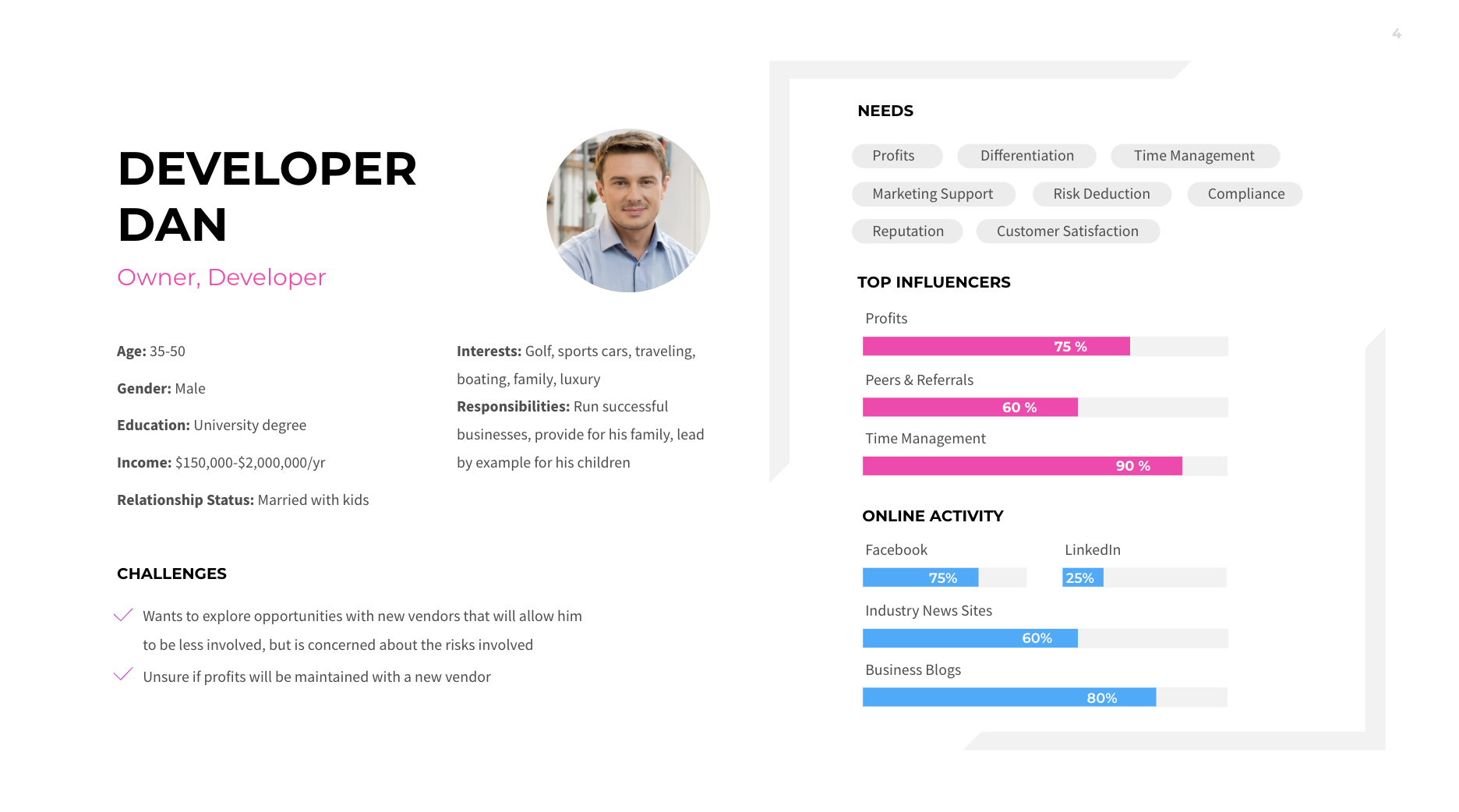 A great way to build out customer personas is by using the acronym FROGS:
A great way to build out customer personas is by using the acronym FROGS:
- F - Finance
- R - Recreation
- O - Occupation
- G - Goals
- S - Struggles
Finance
This covers a few bases.
- Personal earning capacity
- What kind of budget do they have control over or have available
- Annual company revenue
Recreation
Here, you are looking into your customers’ personal lives - not too personal!
This should cover things like educational background, family, marital status, where they get information from (such as publications they subscribe to), and how they typically buy/interact with vendors (online, in-store, referral, email, phone).
Occupation
This is one of the key areas of information you need to capture to create a successful B2B content strategy. Understanding your buyers’ responsibilities gives you a powerful insight into their challenges and needs. It will also help you understand your buyer’s decision making process.
You should be asking questions such as:
- What is their role or job title?
- Who do they report to and who reports to them?
- What are they responsible for?
- What background and skills are required for the role?
- What tools do they use in their job? (especially relevant for SaaS companies)
- What industry is the company in?
- What is the size of the company? (no. of employees)
Goals
Understanding your customers’ goals will help you align your marketing and content strategies with their occupational objectives. If you can clearly demonstrate how your product will help them achieve those goals, you’ll capture their interest.
Challenges
What's getting in the way of them achieving those goals? What are their biggest challenges? As with their goals, if you can create content that shows you understand those struggles, and (further down the funnel) that you can solve them, then you’ll have a winning B2B content strategy.
By now you should have a pretty good grip on who your audiences are. That's right, audiences. If you’ve managed to narrow it down to just one persona, great! More likely than not though, you’ll have two or more personas, perhaps as many as 10 or more depending on the complexity of your product(s).
Understanding How You Help
And, now that you know who they are, you should also have a strong understanding of the problems and challenges your company solves for them.
Using the information you’ve gathered from your research to determine
- What the problem is
- Why it exists
- The negative effects the problem has on your customer
- How your company solves the problem
- The positive effects of your product or service in solving the problem
This last point is crucial, as it gives you the ammunition and guidance to sell the dream.
We mentioned earlier that B2B buyers are more logical than emotional buyers, and while this is absolutely true, we all dream of how amazing our work lives would be if that one problem just vanished.
You can use this to your advantage when it comes to creating B2B marketing content by showing your customers exactly what that dream looks like.
B2B Content Marketing Message
Your message is what you want to communicate to the world about your company. It’s what you want your customers to think of when they see your logo, or someone mentions your company name in conversation.
It should be customer-centric, result-focused, bold, and most importantly, honest. You may wish to narrow it down to a tagline or simple sentence, whether this ends up being used externally or not.
You should also focus on what makes your offering unique. Consider that you might not be the only company that solves your customer's problem, even if you’re the only one that does it the way you do. What makes your product or service the best option?
Let’s say you’re a SaaS CRM company. Your product is designed to be highly customizable, and your customers choose you because they are sick of being limited by the layout and functionality of the CRMs they’ve used to be in the past. You want them to ‘have it their way’ — you’re the Burger King of CRMs.
An example of your message might be:
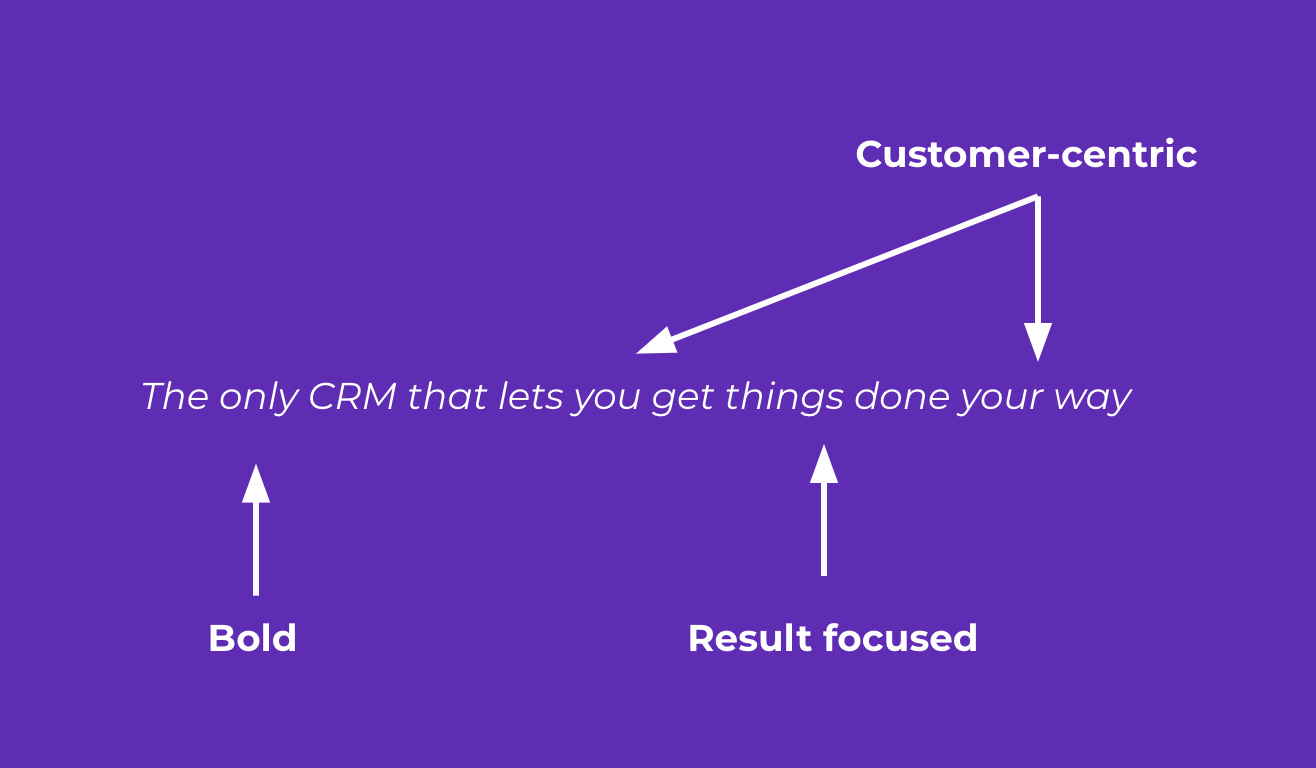
Themes Sell The Dream
Once you’ve locked down your message, it’s time to think about how you’re going to communicate that to your audience.
Sure, a tagline or slogan is great, but you can’t just ram it down their throats and expect them to buy. You need to prove it, which is exactly what your content is going to do. A helpful way to provide guidance for planning your B2B content is to create themes.
Themes are like umbrellas under which all of your content should fall under. They are the key pillars that guide the production of content and preach your message.
An example here might look like this:
- Theme 1: Innovation - ahead of the curve, modern, forward-thinking
- Theme 2: Adaptable - flexible, customer-centric, customizable
- Theme 3: Support - help to get things down your way, accessible, on your side
- Theme 4: Expertise - technologically literate, know how to help you get it down your way, experience
What Does Success Look Like?
 You know who your customers are and you’ve created personas. You know the challenges they face, and you’ve created a marketing message that demonstrates how your company solves those problems, with key themes for delivering that message.
You know who your customers are and you’ve created personas. You know the challenges they face, and you’ve created a marketing message that demonstrates how your company solves those problems, with key themes for delivering that message.
But, how do you know if you’re doing a good job?
Before you get planning and creating content, you should settle on some clear objectives. This might include lead generation, online engagement, more sales, increase in website traffic etc…
Having a clear view of your goals from the beginning will help you determine the effectiveness of your business to business content marketing, so you can measure results and make adjustments as necessary.
Implementing Your B2B Content Marketing Plan
Now that you have a B2B content marketing strategy cemented, you can start planning out the different types of content you need to create.
Having spent a significant amount of time researching, interviewing, and analyzing your customers needs, you should have a fair idea of the information and messages you want to communicate.
So, how can you turn those messages into the content? And what content types are going to work best?
Discovering B2B Content Marketing Ideas
It can be tough to come up with fresh content ideas each month, which is why it’s best to spend time at the beginning creating a clear strategy with core themes and messages to guide your idea creation.
You should use these themes to create a content calendar (or content plan) that spans several months. Many marketers even plan for a full 12 months.
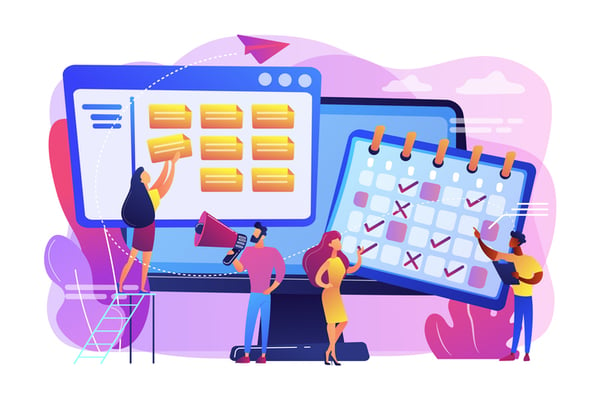
A great way to understand how your messages can be distributed across different content types is by dividing your content creation into the different stages of the marketing funnel.
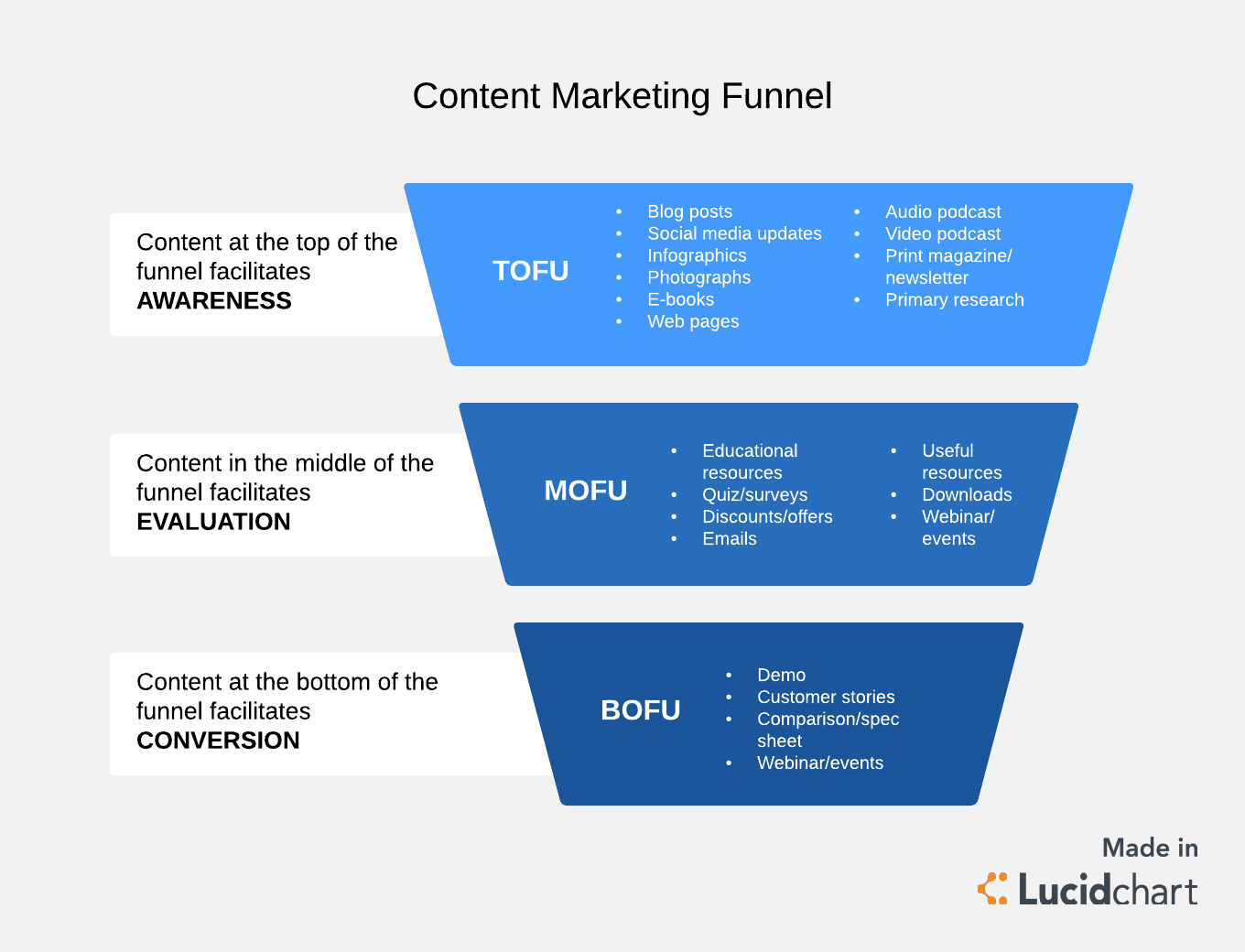 Image source: lucidchart.com
Image source: lucidchart.com
1. Top of Funnel B2B Content
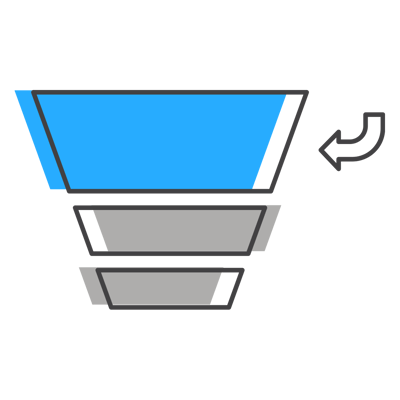 Top of funnel or TOFU content should be highly educational and in many cases be general to the industry or roles you are targeting, as opposed to directly pitching your company.
Top of funnel or TOFU content should be highly educational and in many cases be general to the industry or roles you are targeting, as opposed to directly pitching your company.
Customers in this stage of the funnel are in the ‘Discovery’ phase of the buy cycle. That means they are just discovering your brand.
Think: How can we be useful or helpful?
Blogs are a classic example of this and are probably the most widely used content format right now. However, audio and video formats are becoming increasingly popular among content consumers, so you should consider diversifying your TOFU content types.
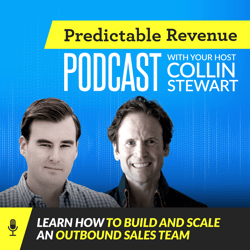
Podcasts are a brilliant way to build awareness of your company or product, by being a valuable source of free information that your prospects can action right now.
Canadian outbound sales academy Predictable Revenue hosts a weekly podcast, interviewing guests of various expertise in the outbound sales arena. Focused on providing quality, actionable insights to top-of-funnel prospects, the podcast is a brilliant way to build awareness and start creating engagement.
Image source: sticher.com
2. Middle Of Funnel B2B Content
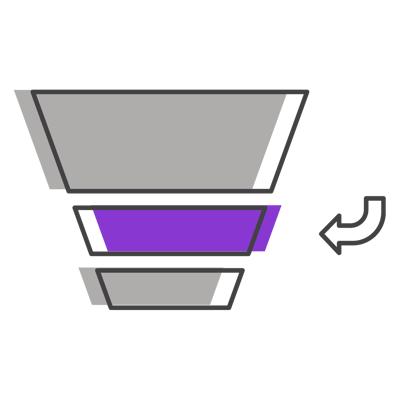 Mid-funnel prospects are potential buyers in the ‘Consideration’ stage. This means your TOFU content has been successful in educating them around a challenge to the point where they are considering how they might be able to solve it.
Mid-funnel prospects are potential buyers in the ‘Consideration’ stage. This means your TOFU content has been successful in educating them around a challenge to the point where they are considering how they might be able to solve it.
When creating MOFU content, you’re demonstrating your expertise and your authority. It’s still not about pitching your product or service, it's about building a relationship with the prospect.
Think: How can we create engagement?
Remember when we said your B2B marketing content needs to be useful, efficient, and actionable? Well, mid-funnel content is where this is absolutely vital. Making a purchase as a business is an investment, and your prospect wants to know above all else that they can trust your brand to deliver.
Where top-of-funnel content is generally short-form and designed to capture attention and attract new prospects, mid-funnel content should go further, taking the prospect on a deep dive into a subject matter, providing highly actionable, real world advice that can create significant impact.
Our Burger King CRM SaaS company might create an ebook on how 5 different companies use CRMs to manage sales workflow or perhaps run a webinar with a representative from each company, and then use that discussion to create a guide on how to get the most out of your CRM (content repurposing hack - you’re welcome).
Case studies are also a powerful way to show real-life examples of how your company has made a significant impact on your customers, allowing the prospect to see the ‘dream’ come true.
3. Bottom Of Funnel B2B Content
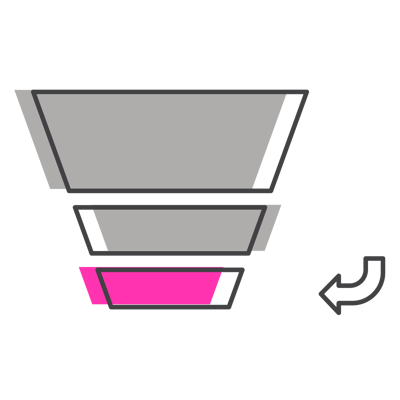 The bottom of the funnel content is where you can really show your stuff. Prospects at this end of the marketing funnel are in the ‘Purchasing’ stage and are ready to make a decision.
The bottom of the funnel content is where you can really show your stuff. Prospects at this end of the marketing funnel are in the ‘Purchasing’ stage and are ready to make a decision.
Depending on your company, this is often where the sales team engage, making use of the content types such as testimonials and detailed product specs and offering demonstrations or free trials.
Think: How can we close?
Harnessing the Power of a B2B Content Marketing Blog
It's the first word on everybody’s lips when talking about content marketing and for good reason. 80% of B2B marketers publish blogs as part of their marketing strategy
One of the biggest benefits of blogging is the way it impacts your website traffic. Studies show successful blogs can increase your web traffic by up to 600%.
This is not only due to B2B content marketing blogs being a written medium and therefore able to be optimized for search engines, but engaging social media and email marketing tactics that share your blog posts gives you an incredibly wide reach, growing your audience at the top of the funnel.
It's important to remember to keep your blog topics on theme and relevant to your audience, but that shouldn’t stop you from writing about a variety of applicable topics. At Roketto, we’ve written on everything from social media content to Google Maps to the Ultimate SaaS Marketing Plan.
B2B Content Marketing Best Practices
If you’re serious about creating a killer B2B content marketing strategy, then it's worth spending some time checking out how the experts do it.
1. Repurpose Your B2B Content
To get the best return on investment in B2B content marketing, you have to repurpose content. One of easiest ways to do this is by turning your video content in blog posts.
Moz.com runs a video series called Whiteboard Friday, and each video is accompanied by a written blog post — two birds with one stone.
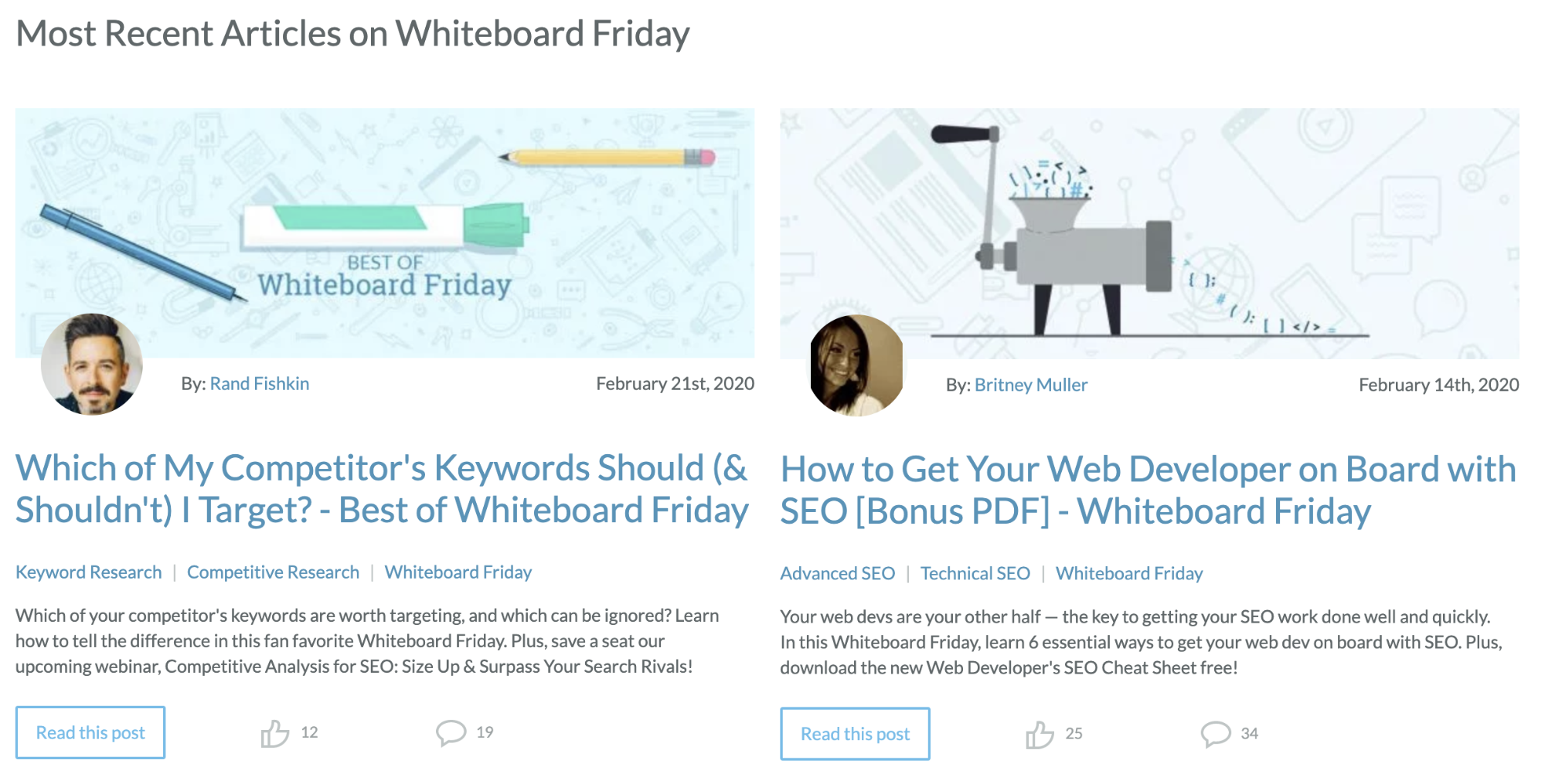
Some other ways you can reuse your B2B marketing content:
| Original Format | Repurposed Format |
|---|---|
| Blogs | Roundup post |
| Webinar | Video tutorial |
| Website content | Ebook |
| Blog series | Ebook or guide |
| Long form video | Short animations |
| Sales slideshow | Infographic |
2. Use Gated Content To Generate Leads
Especially useful for capturing top of funnel leads, gated content is a piece of content that is offered up in exchange for details such as the prospects email address. This is a great way to build an email list.
A great example of this is offering a free kit, template or Ebook as a call-to-action on a blog page.
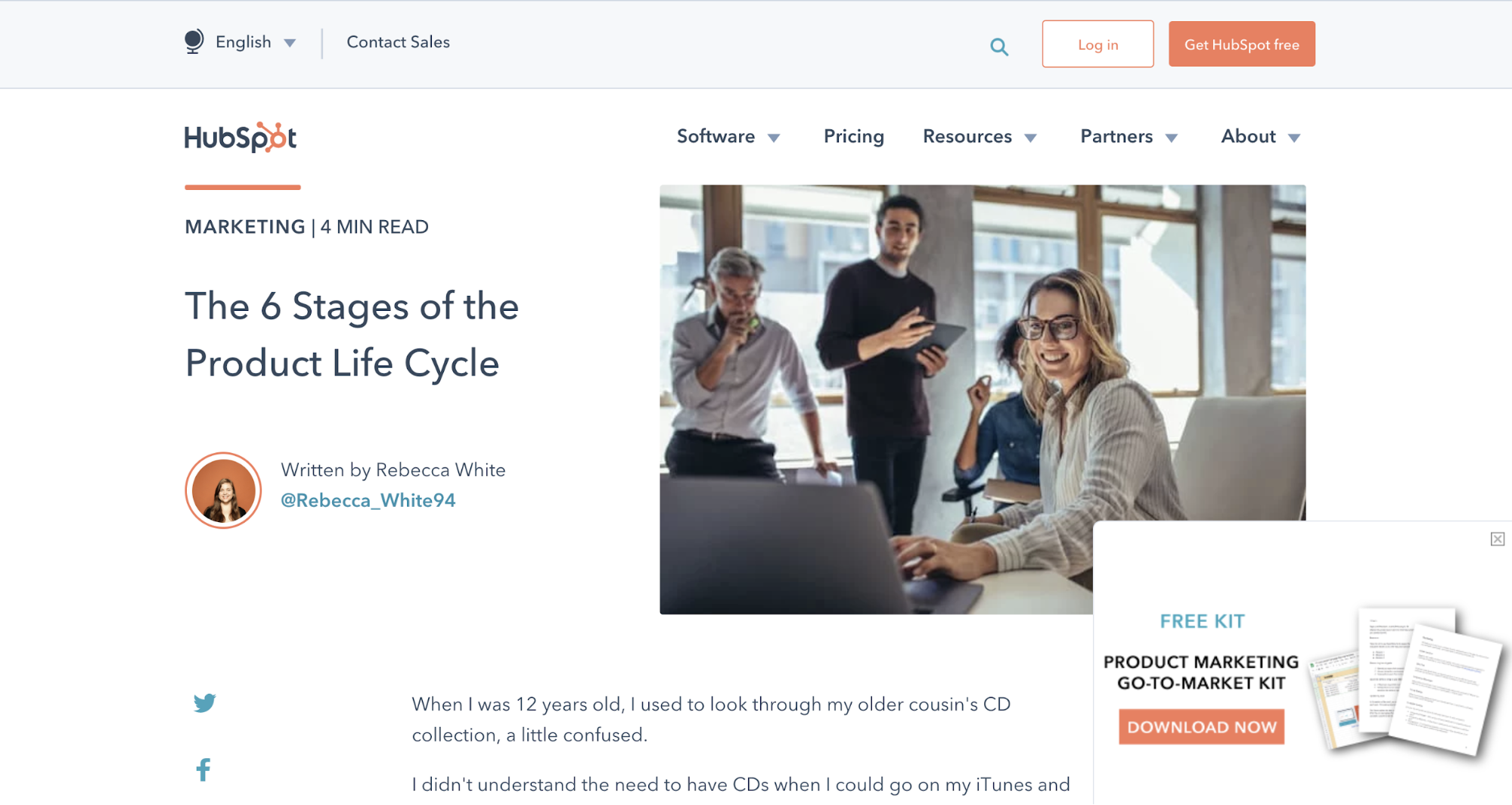
3. Segment Your Email Marketing List
Speaking of email lists, you shouldn’t just have one!
As you continue to collect prospect data, you will quickly grow your email database to a point where it becomes difficult to understand where in the buy cycle your prospects are.
You should consider segmenting your email lists, perhaps by funnel stage or engagement, or by their buyer persona or lead score.
4. Measure And Adjust
The most successful business to business content marketing campaigns are not set and forget projects. The leaders in content marketing are constantly measuring their successes (and failures), and make changes and adjustments where necessary.
If your webinars are getting poor attendance, but your email course is receiving high open rates, focus on driving more traffic to the email course! Remember, not every content format works well for every audience.
Summary
As you can see, launching a B2B content marketing campaign is not simply a case of publishing a blog every week and sending out to your email database each month.
Content marketing for B2B is a beast, but one you can defeat if you have the right weapons in your arsenal. A successful B2B content marketing strategy involves analysis, interviews, creating buyer personas, refining your messaging, and creating themes that guide your content planning.
If you fail to spend the time up front getting this stuff right, its likely your content will lack any form of impact. Put the hours in and nail down a robust strategy before you get creating, on you’re on the track to success.
So, sharpen your sword and go slay the beast.
Need Help?
Struggling to get anywhere with your B2B content marketing strategy? Roketto is one of Canada’s most recognized inbound marketing agencies. We develop content for all stages of the funnel, rather than simply focusing on top of funnel prospects. Get in touch here, and let’s talk.

Chris Onyett
Chris is one of the managing partners at Roketto. His area of expertise is digital marketing and loves sharing and educating on topics like Google Ads, CPC bidding tactics, Google Analytics, and marketing automation. When Chris isn't in the office, he enjoys playing volleyball, mountain biking, and hiking with his American Eskimo.













2.png)
2.png)


